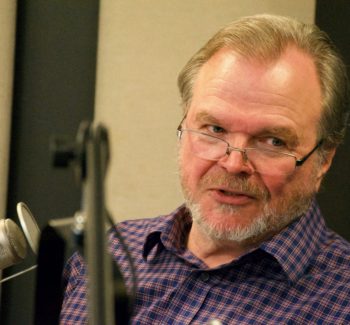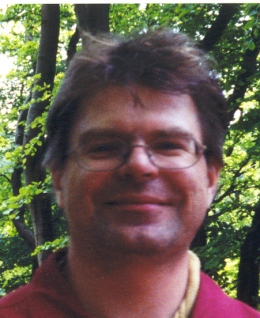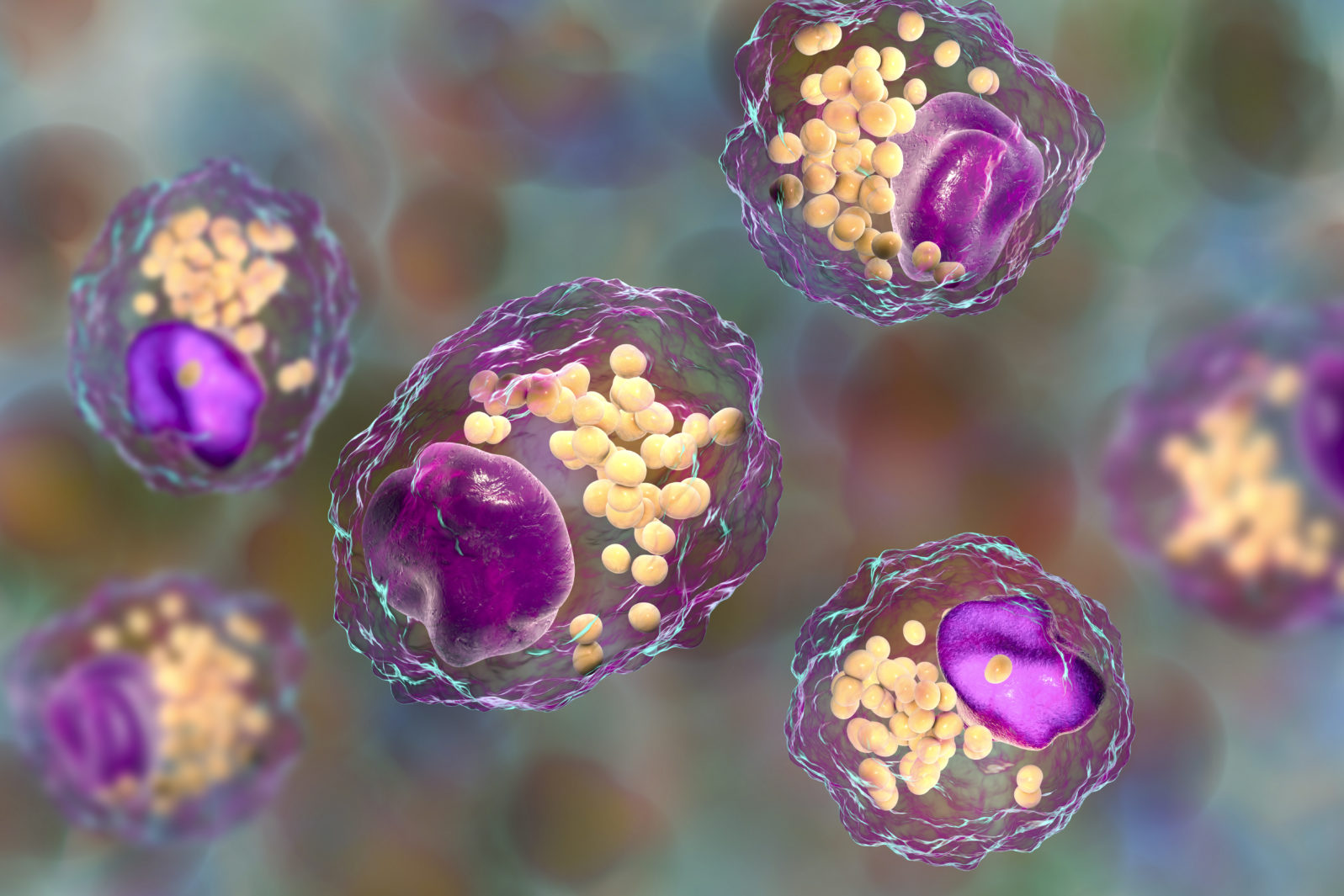Life Is So Wonderfully Finely Tuned That It’s Frightening
A mathematician who uses statistical methods to model the fine tuning of molecular machines and systems in cells reflects…In Episode 2, “Life is fine-tuned in a fearful and wonderful way” (September 9, 2021), Swedish mathematician Ola Hössjer discusses fine tuning in biology with Walter Bradley Center director Robert J. Marks. It’s a bit scary to think that each of our cells is like a city because it certainly gives us some idea of all the things that can (but, thankfully, usually don’t) go wrong, Note: Episode 1 was “Run the gambit of complexity” (September 20, 2021) discussed here and here.
This portion begins at 01:14 min. A partial transcript, Show Notes, and Additional Resources follow.
Robert J. Marks: Today we’re going to talk about fine tuning in biology. How biology is fine tuned to allow us to exist here. It allows us to live, breathe and have lives that we enjoy.
Okay. Ola, you coauthored a well-received paper, using statistical methods to model the fine tuning of molecular machines and systems.
Note: The paper, Thorvaldsen, Steinar, and Ola Hössjer. “Using statistical methods to model the fine-tuning of molecular machines and systems.” Journal of Theoretical Biology 501 (2020), is open access.
Robert J. Marks: I know little about fine tuning and biology. My car is not a molecular machine, but it’s a machine. It has a gas cap that unscrews to give me access to the little pipe that goes to my gas tank. That allows me to fill my car with gas and then replace it so the gas doesn’t get polluted.

I suppose I could talk about the fine tuning of the gas cap. The threads for the screws have to be just right. The gas cap can’t be too big in diameter because it won’t fit in the little hole. To me that doesn’t sound very compelling as fine tuning. But I suspect, and I know from perusing your paper, that fine tuning and biology is much more sophisticated than that. Ola, what are some of the more sophisticated examples of fine tuning in biology?
Ola Hössjer: In order to talk about fine tuning in biology, we have to go into the small things within the cell. During the first episode, we talked about different ways of quantifying or defining fine tuning, and it’s closely relate to the specified complexity that Daniel [Diaz] talked about. We can say that something is fine tuned if it’s complex, unlikely to occur by chance. Secondly, if there’s an independent description or specification of the thing that is fine tuned.
Now there are a number of features within the cells that satisfy these two requirements. The first are proteins. In order for the cell to manufacture proteins, there is an amino acid sequence written in a 20-letter alphabet of amino acids.
Amino acids form the building blocks of the protein. In order for a protein to work, when these amino acids are manufactured in the ribosomes of the cell, this amino acid string has to be folding in a complicated three-dimensional structure that is specific for each protein. That is necessary for the protein to work. This is a complex structure because, if we look at all possible amino acid sequences of a certain length, there could be a few thousand amino acids that comprise a protein.
It turns out that [only] a very small fraction of amino acids sequences give us a functioning protein. That is the first definition of fine tuning. It’s complex. It is unlikely to happen by chance, to get a functioning protein. The second part: We should have an independent specification. In this case, the specification is that the protein works. For that reason, a protein is an example of a fine tuned structure in biology.
Then we could get up to the next hierarchical level and look at complexes of proteins, like molecular machines. The ribosome that manufactures proteins in the cell is itself a molecular machine that consists of many proteins that have to be arranged in a certain structure in order to work.

Another example is mitochondria in the cell plasma. These are the power stations of the cell that generate ATP. This is also an example of a molecular machine where all parts have to be structured in a certain way. One could say — we talked about this during the first episode — a specific case or a special case of fine tuning are irreducibly complex systems: It consists of many small parts, and all parts must function in order for the whole system to work.
Robert J. Marks: So if you remove one of the parts in the process you’re talking about, the whole thing breaks down. Let me give you a guess as an example, on the macroscopic level. Our lungs, for example, have a bunch of individual cells, and one of these cells has no idea what the other cells are doing but they all work together to allow us to breathe and put oxygen in our blood and other things. Would that be a big example of what you’re talking about?
Ola Hössjer: Yes. And another, you could view the whole cell as a cellular city. It has a network of roads, or factories and power stations.
Robert J. Marks: These are things which display irreducible complexity. You take away one piece, the whole thing falls apart.
Ola Hössjer: Yes. Because it’s one layer above above the protein complexes. If the parts themselves are the protein complexes, the molecular machines that we talked about are irreducibly complex. Then that will be the case also on the next level. Not by definition, but typically, that is the case.
Next: Can there be a general theory for fine-tuning?
Here are all of the instalments, in order, of the discussion between Robert J. Marks, Ola Hössjer, and Daniel Díaz on the fine tuning of the universe for life:
The first episode:
Ours is a finely tuned — and No Free Lunch — universe. Mathematician Ola Hössjer and biostatistician Daniel Díaz explain to Walter Bradley Center director Robert J. Marks why nature works so seamlessly. A “life-permitting interval” makes it all possible — but is that really an accident?
and
Fine-tuning? How Bayesian statistics could help break a deadlock: Bayesian statistics are used, for example, in spam filter technology, identifying probable spam by examining vast masses of previous messages. The frequentist approach assesses the probability of future events but the Bayesian approach assesses the probability of events that have already occurred.
The second episode:
Life is so wonderfully finely tuned that it’s frightening! A mathematician who uses statistical methods to model the fine tuning of molecular machines and systems in cells reflects… Every single cell is like a city that cannot function without a complex network of services that must all work together to maintain life.
Can there be a general theory for fine-tuning? If you make a bowl of alphabet soup and the letters arrange themselves and say, good morning, that is specified. What are the probabilities? Ola Hössjer sees the beauty of mathematics in the fact that seemingly unrelated features in cosmology and biology can be modeled using similar concepts.
The third episode
Was the universe created for life forms to live in? How would we know? We can begin by looking at the fundamental constants that underlie the universe. The constants of the universe — gravitational constant, entropy, and cosmological constant — must be finely tuned for life to exist.
Why did Stephen Hawking give up on a Theory of Everything? Daniel Díaz and Ola Hössjer continue their discussion of the fine tuning of the universal constants of nature with Robert J. Marks. The probability, they calculate, that the fine tuning of our universe is simply random is down to 10 to the minus sixty — a very small number.
The fourth and final episode
Is life from outer space a viable science hypothesis? Currently, panspermia has been rated as “plausible but not convincing.” Marks, Hössjer, and Diaz discuss the issues. Famous atheist scientists have favored panspermia because there is no plausible purely natural explanation for life on Earth that would make it unnecessary.
Could advanced aliens have fine-tuned Earth for life? That’s a surprisingly popular thesis, considering how hard it is to account for life without assuming a creator. As Robert Marks, Ola Hössjer, and Daniel Díaz discuss, some prominent atheists/agnostics have chosen to substitute advanced extraterrestrials for God.
Our universe survived a firing squad and it’s just an accident? According to the Weak Anthropic Principle, if things weren’t the way they are, we wouldn’t be here and that’s all there is to it. Given the odds, a philosopher likens the Weak Anthropic Principle to surviving a firing squad and concluding, incuriously, well… that’s just the way things are.
In an infinity of universes, countless ones are run by cats… Daniel Díaz notes that most of the talk about the multiverse started to appear once it was realized that there was fine-tuning in nature. Robert J. Marks points out that even 10 to the 1000th power of universes would only permit 3,322 different paths. Infinity is required but unprovable.
and
If extraterrestrials didn’t fine tune Earth, maybe there is a God. In the face of a grab bag of ideas like creation by ETs or countless universes (some run by cats), why does the idea of a Creator seem far out? Traditional philosophers, not committed to a religion, have thought that deism (and theism) are rational, science-based conclusions, based on fine tuning.
You may also wish to read: No Free Lunches: Robert J. Marks: What the Big Bang teaches us about nothing. Bernoulli is right and Keynes is Wrong. Critics of Bernoulli don’t appreciate the definition of “knowing nothing.” The concept of “knowing nothing” can be tricky.
Show Notes
- 00:47 | Introducing Dr. Daniel Díaz
- 01:00 | Introducing Dr. Ola Hössjer
- 01:14 | Fine-tuning in biology
- 07:15 | A cellular city
- 08:15 | Population genetics
- 12:07 | A general theory of fine-tuning
- 22:27 | Probability to measure the degree of fine-tuning
Additional Resources
- Daniel Diaz at the University of Miami
- Ola Hössjer at Stockholm University
- Fine Tuning at Stanford Encyclopedia of Philosophy
- Thorvaldsen, Steinar, and Ola Hössjer. “Using statistical methods to model the fine-tuning of molecular machines and systems.” Journal of Theoretical Biology 501 (2020)
- Daniel Andrés Díaz-Pachón and Robert J. Marks II “Active Information Requirements for Fixation on the Wright-Fisher Model of Population Genetics” BIO-Complexity, Volume 2020, Issue 3 (2020)
- Daniel Andrés Díaz-Pachón, Ola Hössjer, Robert J. Marks “Is Cosmological Tuning Fine or Coarse?” Journal of Cosmology and Astroparticle Physics, July 9, 2021.
